KEY POINTS
- Overview of what shims are, types of shims and why DIYers need them
- Detailed review of pros and cons of different types of shim materials

TABLE OF CONTENTS
Introduction
Shims are used often to hold objects in place until they are fastened with screws, grout, adhesive, welds, or other methods.
There are literally thousands of kinds of shims with varying shapes, sizes and materials.
Used since the Egyptian era, shims have been made of wood, plastic and metal often found as scrap on job sites.
- LEVEL means to be on even horizonal plane with respect to ground
- PLUMB means to be perfectly vertical (perpendicular to a level surface)
Whether you are leveling floorboards, fixing creaky steps, replacing windows, doors, installing toilets, shims are a critical component of DIY projects so having a bunch shims on hand is a good idea.
Properly installed shims will make your end product to a professional level that you will be very happy down the road.
What are Shims
Sometimes referred to as a wedge, spacer, cleat or cusp, a basic, core function of a shim is to fill a gap between two mating surfaces.
Shims are found in both residential and industrial settings with a wide range of operating environment.
Wood, composite and plastic are the most common shims used in construction where as metal .A gap can be created when surrounding framing members are out of level of not plumb, or industrial setting when two parts are designed with a specific spacing in mind.
In addition, creaking stairs, crooked toilets, hard to open windows all indicate that they are not level (horizontal) or plumb (vertical).
Shapes
- Flat (in variety of shapes)
- Used to fill in small spaces or gaps (i.e. gap between tiles in home construction, etc.)
- In aerospace applications, traditional shims are designed with exacting standards as a pre-planed part so they are not adjustable. On the other hand, peel-able and edge bond shims can be adjusted by peeling off layers to adjust for specific adjustments
- U-shape or Horseshoe
- Horseshoe shims are usually made from high impact plastic that will not rust, leach or leave rot stain
- Used in multiple leveling and alignment situations, horseshoe shims allows you to fit around obstacles like nails or bolts
- Horseshoe shims are most commonly used in masonry work and in pre-cast concrete building construction when flat shim is required.
- Tapered shims / Wedge
- Used in situations to fill a a large gap between two parts
- Commonly used tapered shims are designed to tightly fill the gap by pushing in pieces, creating tension on two parts
Size
- Sizes of a particular shim or spacer can very widely.
- In most DIY building applications, shims are 2 inches wide and about 8 inches long.
- In DIY plumbing, most plastic shims are 1 inch wide and 2 1/2 inches long
Strength
- Most DIY shims are used in light-weight applications (i.e. leveling a window or plumbing a door, etc.) so the compression rating not of importance
- Most household composite and wood shims cannot handle compression load above 8,000 pounds
- If you need shims to support any kind of load-bearing situations (i.e. dead loads, construction loads, and live loads, etc.) you will need to purchase the foundation shims which are usually made from A36 or 1018 carbon steel made to withstand a lot of pressure during the leveling process.
Making Your Own Shims
As much as I like to do everything myself, I don’t own a table saw so making my own shims is not practical.
If you do own a table saw, the process of making your own shims is fairly straightforward.
Different Types of Shim Materials
Understanding the types of shims allows you to choose the best shim product for your needs. Shims are made from a variety of materials because they are used in so many different situations.
Composite Shims
Although manufacturers have their own proprietary blend mixture, most composite shims are made by combining wood fiber/cellulose and recycled plastic (i.e. milk and soda bottles).
Even than some batches can have inconsistent quality so do two simple tests after purchase:
- Bend a random shim to confirm that it should be somewhat flexible and not brittle; of course it should not be too flexible (like Gumby) as softer mixture will have lower compression rating
- Soak one in a container of water overnight; shim should maintain its integrity and there should not be any gel-like substance (not waterproof)
Benefits
- Greater compression load strength than regular wood shims
- Impervious to insects and moisture
- Resists splitting, splintering and swelling
- Lined shims (ridges or grooves on one side) for easy snapping
Drawbacks
- Greater compression load strength than regular wood shims
- Impervious to insects and moisture
- Resists splitting, splintering and swelling
- Lined shims (ridges or grooves on one side) for easy snapping
Two most well known brands used in DIY projects are Nelson Composite Shims and Timberwolf Composite shims
^ Back to Different Types of Shims
Metal Shims
Most common metal shims are made from a very thin roll of thin gauge metal or foil.
Metal shims can be cut by laser, water jet (CNC), stamping or machining
- Aluminum – excellent strength-to-weight ratio; used in situations where weight is a concern
- Blue tempered steel – derivative of high-carbon steel; known for high-yield strength and high fatigue strength
- Brass – highly ductile, non-corrosive and non-magnetic; commonly used in electronics applications
- Bronze – strong ductile alloy of copper; resists fatigue and corrosion; used in electronic applications
- Carbon steel – relatively soft and low strength than other metals; has high ductility making them excellent for machining
- Copper – high conductivity to temperature and electricity; resists corrosion; used in electrical/electronics applications
- Stainless steel – corrosion resistant; high tensile strength, durable and temperature resistant
- Titanium – low density metal but with high strength-to-weight ratio; high resistance to corrosion from many harsh chemicals; mostly used in aerospace applications
Equipment used in industrial setting usually require precise positioning to meet exact tolerance.
In industrial setting, it is often cheaper and quicker to use a metal shim to level a machine tool or fit components together rather than machining or grinding components to make the same mechanical adjustments.
Made of small strips of metal, made from a variety of non-ferrous (no rust) materials like copper, aluminum and brass, are used to fill gaps between parts to create an exacting fit.
Benefits
- High tensile and compression strength
- Water and rust-proof
- Able to handle high-impact applications
Drawbacks
- High tensile and compression strength
- Water and rust-proof
- Able to handle high-impact applications
Although industrial shims can be made from high-density plastic or rubber, metal shims are made from very carbon steel thin sheets are used because of high heat, corrosive chemicals, high vibration, etc.
^ Back to Different Types of Shims
Plastic Shims
Usually made from petroleum derivatives like ABS and Polypropylene, plastic shims are also known as “wobble edges” or leveling shims.
Plastic material can easily be customized so you will find a greater number of choices:
- The Original Wobble Wedges 300 pack, Made in USA (see price here)
- The Wobble Wedges Shop Shim Kit – 37 pieces, Made in USA (see price here)
Benefits
- Waterproof and rotproof
- Light and stain-resistant
- Easy to position due to smaller size
Drawbacks
- Meant as leveling shims so drilling is not recommended
- Difficult to cut
Commonly used to remove small movements, leveling shims are used in plumbing fissures, furniture and appliances.
^ Back to Different Types of Shims
Wood Shims
Wood shims are primarily made from pine or cedar
Wood shims from large home improvement stores are usually made from inexpensive pine wood. Found commonly near windows and door section, wood shims are light and easy to cut off:
- Nelson Tapered Wood Shims (check the price here)
- Tapered Cedar shims (check the price here) or Nelson Cedar Shims 56 pieces (check the price here)
Benefits
- Light
- Easy to cut with a utility knife
- Can be glued together
Drawbacks
- Frequently splits if not pre-drilled
- Absorbs moisture
- Issues with mildew, rot and insects (pine only)
Why Plenty of composite shims (usually 1 pack of 8-10 shims per window). Why use composite shims vs cheaper wood shims?
^ Back to Different Types of Shims
Composite Shims vs Wood Shims
Traditional wood shims have been used in home buildings for a very long time.
Composite shims have been around since the 60’s and have quickly gained popularity due to their ability to resist water, rot and insects.
I mostly use composite shims involving exterior windows and door where moisture is present but still prefer to use wood shims while working with interior doors for two primary reasons:
- Wood shims have natural grain on them so they offer better friction (i.e. do not slip like composite shims)
- Tapered ends of wood shims are thinner than the taper ends of composite shims
As previously stated, wood shims tend to split but that can be addressed by marking and pre-drilling holes before installing screws.
Where to Use Shims
Although invisible when work is done, shims are used everywhere.
From hanging cabinets, doors and windows to removing wobbles from toilets and furniture as well as flattening floors.
You will rarely find a level or plumb surface to work with so adding some shims to these areas will solve your problems.
Shims used in machine assemblies and devices are highly application-specific with:
- Precision alignment – used to align parallel and angled surfaced when mating two elements together
- Manufacturing Specification Tolerance – allows equipment manufacturers to lower tolerance specs
- Wear Tolerance – designed to wear out instead of more expensive equipment
Regardless of your situation, know that uneven and crooked window and door openings are common, especially in an old house, so make sure to have a variety of shims on hand for your DIY project.
Tools You May Need When Installing Shims
You don’t really *need* any special equipment when working with shims these tools will help you speed up your project:
- Utility knife with a sharp blade – dull knife edge will make it very difficult to get a clean cut
- Wood chisel – to knock out jagged cut edges
- Miter saw – cleanly cut thicker part of the wedge
How Shims are Used or Installed
Shim installation techniques vary slightly depending on if you have access to the opening from both “inside” and “outside”.
For example, when installing a pre-hung door, you probably will have trim pieces from both sides removed first. That means you can place a shim from both sides to slid them into place for a tight fit around your galp.
Would it be that bad if you decide to hang a door without shims? Well, I don’t think your house will collapse or anything like that but based on my personal experience, it’s not good. Here is a standard exterior door frame:
When hanging doors, I usually screw in three screws per side but for the simplicity sake, I only indicated one spot with a red circle.
If we were to eliminate shims during installation, you will likely see two outcomes:
In the case of a bowed door frame, your door may not close properly or there will be a large gap between the door frame and door.
In the case of a weak support, your nail or screw will be the only thing supporting the door so the door will have quite a movement and the nail or screw will most likely fail soon.
Installing shims will provide a solid connection between the door frame and wall frames.
Using two pieces to form a wedge is better than using a single piece because there will be little to no gap so when you screw them down, it has a less chance of bowing the door frame.
In cases where you do not have access to one side, you will have to stack multiple shims from one side, depending on the size of your gap.
If a gap requires shim stacking, I normally cut off a small shim piece (from the thick side), glue it onto a full-length shim and install it
Summary
Steel shims are primarily used in steel-framed structures but unless they are galvanized, steel shims are also subject to rust damage from moisture.
Wood shims are often used in home construction and cabinetry, but it is subject to crushing and rot, wood shims are not ideal materials where moisture may be present.
To mitigate the problems caused by moisture, most DIY and contractors use composite shims in wood-construction jobs
Composite shims are manufactured with exact specifications so they require little or no shaping, and are available in consistent thicknesses and material properties.
If your DIY projects involve old houses, make sure to have a variety of shims on hand (in bulk too).
I hope you found this article to be useful for your DIY project and sign up for my newsletter. The signup form is found on the upper right hand corner of your screen.
Thanks and good luck!

Related Posts
- Replacing Leaky Rotted Basement Windows – Part 1 of 3
- Installing Replacement Windows Part 1 of 3
- Complete Guide to Making Your Own Window Sill
Frequently Asked Questions
- What is plastic shim made of?
- Most plastic shims are made from Acrylonitrile Butadiene Styrene (ABS), high-impact polystyrene, and polypropylene
- What are shims used for?
- Normally used to adjust an item of interest in small incremental amounts to make it level or plumb
- What are ABS shims used for?
- common ABS shims are shim plates, alignment shims and shim spacers/washers
- Are all composite shims waterproof?
- Most composite shims with 50% or more plastic are waterproof
- Can you stack plastic shims?
- Although most plastic shims can compress, they should not be stacked in high-load bearing situations
- Do you screw through shims?
- Yes, you can screw through most materials
- How do you use multiple shims?
- If possible, the best way is to insert a pair of shims into the space in opposing direction
- Can I use composite shim in foundation?
- No, most composite shims are not rated for use in foundation support
- Is composite shim safe to be used inside my home?
- All composite shims designed for residential use can be used inside a home
- What is the difference between a spacer and a shim?
- Shims usually feature a thin, tapered profile while spacers have a flat profile with greater range of thickness. A spacer can also be referred to as blocks, bushings, pins or sleeves
- What is the difference between a spacer and a shim?
- Shims usually feature a thin, tapered profile while spacers have a flat profile with greater range of thickness
- My newly installed interior door is sticky or hard to open? Why?
- Improperly installs shims are often the cause for your side door side jamb to bulge. To fix it, re-install your shims at the point of binding

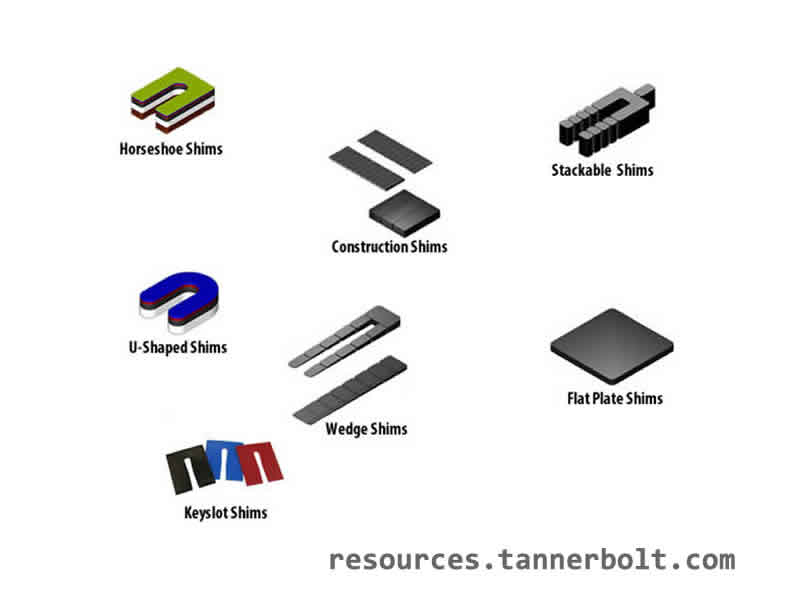





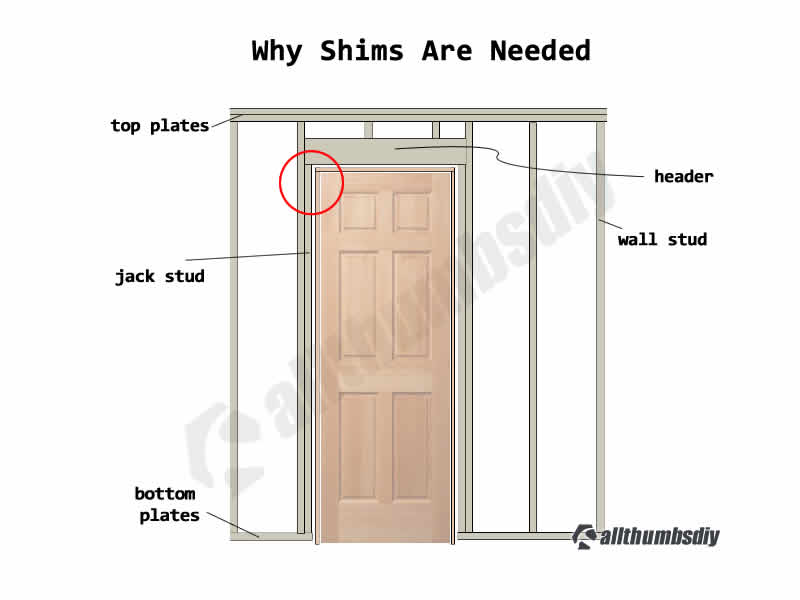

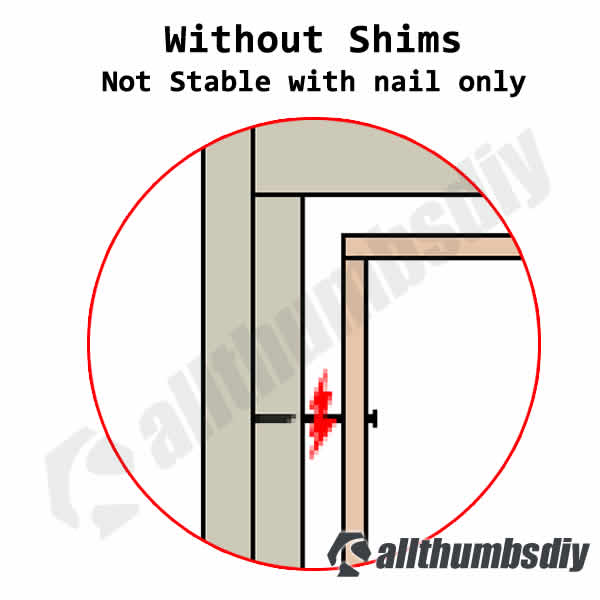
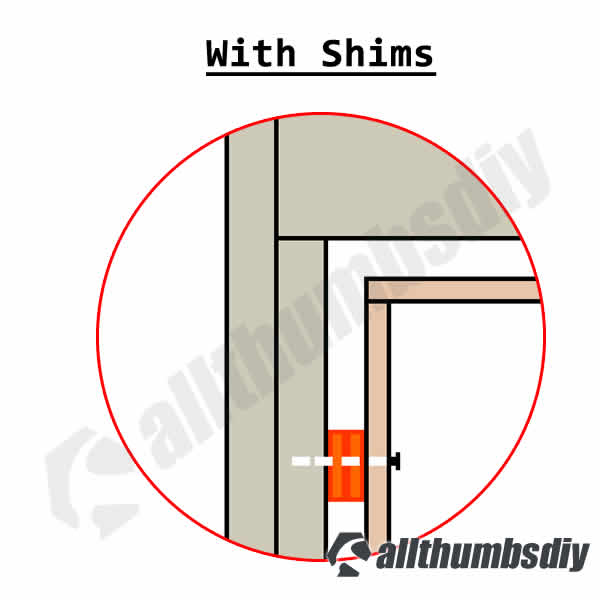
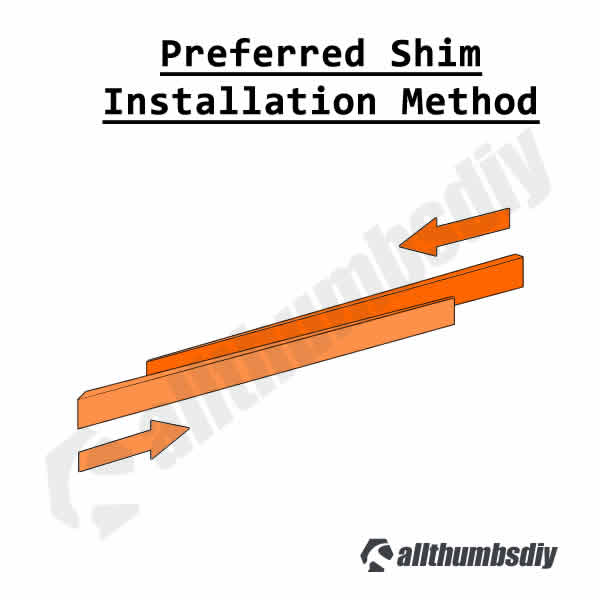
Lily Bridgers
Wednesday 21st of June 2023
My dad is looking into metal shims for foundation leveling because he has noticed some unevenness and settling in the floors of our home. He wants to ensure the structural stability of the foundation and prevent further damage by using metal shims to adjust and level the foundation, providing a solid and even base for the entire house. He must know that shims are frequently used to keep things in place while other materials, like screws, grout, glue, or welds, are being used to secure them. Thanks for this.